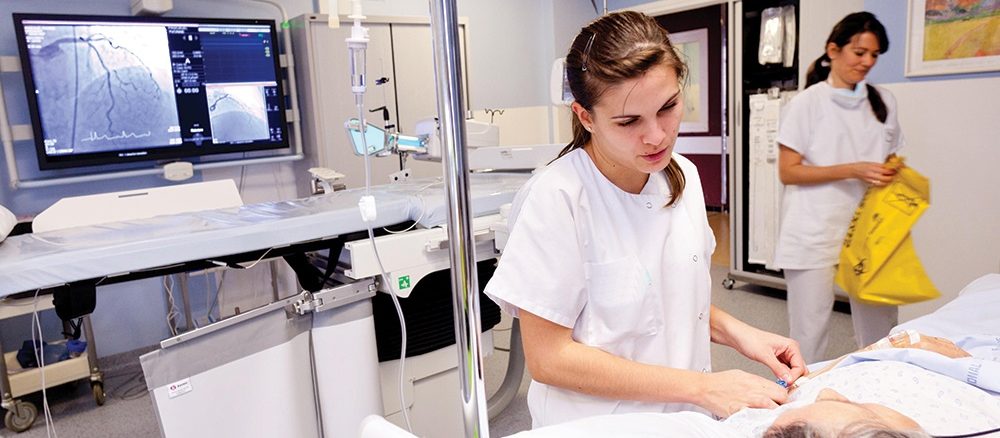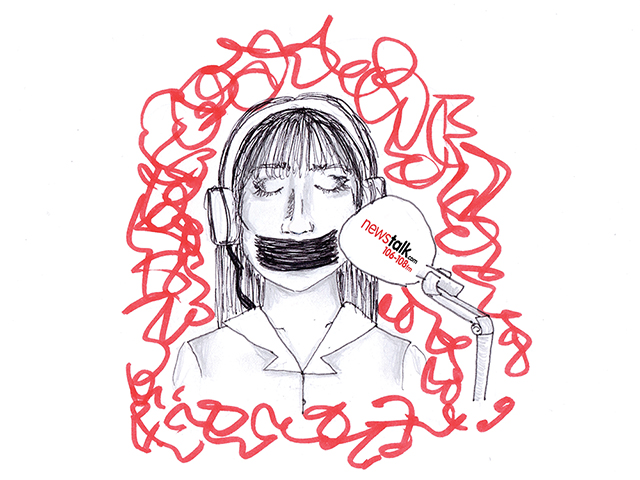
[dropcap]While[/dropcap] walking around, checking on patients, first year nursing student at Galway-Mayo Institute of Technology (GMIT), Rebecca , noticed that one of the louder patients on the ward was being oddly quiet. As any nurse would, Rebecca went in to make sure there was nothing wrong when she came across somebody who looked ‘pale and lifeless’.
“I couldn’t feel a pulse so I started CPR and shouted for help but no one came to help me and I pressed the [nurse call] button but obviously it was not working. I was trying to do compressions and trying to shout for someone to come in and help me at the same time. The ward manager came in and was annoyed at me for shouting.
Rebecca remembered telling the ward manager: “this patient is unresponsive and I’m trying to do CPR, I’ve been calling for help for a good 2 minutes and no one has come in.”
More nurses came in after that and I felt like I was just pushed out of the way, ” Rebecca said.
Rebecca had been in college for a total of ten weeks before going on her first placement. There is a huge workload on nursing students and considering the understaffed conditions, there is more and more pressure on nursing students to be able to do the job of a fully qualified nurse.
The process of supportive learning while on placement is for the student to be paired with a link nurse who is supposed to be with them at all times, supervising and teaching. However, this is largely not the case for many student nurses on placement.
More often than not student nurses are expected to do as much as any other qualified nurse by filling out paperwork, feeding and washing patients as well as taking blood pressure. Rebecca, for example, was asked multiple times if she could remove IVs from different patients which she refused.
“We are not allowed to touch drugs and we’re not allowed to touch IVs and it is very easy for the nurses to forget I’m a first year and ask me to just disconnect an IV, especially if they are busy.” Rebecca said.
The workload that is expected of these unpaid trainees is huge.
“On the ward that I was on there was supposed to be two nurses in each bay. They realised that I was competent and able to do most of the work like changing, washing -the major work.”
“I was left in a bay, one nurse was told she could have a day off and no extra nurse was brought in so it was me, and one qualified nurse in a bay where there should have been two qualified nurses and me,” Rebecca said.
This left Rebecca and her nurse with twelve patients along with the paperwork that comes with each of those patients. She explained that paperwork has to be filled out for absolutely everything. If a patient is fed, their paperwork has to then be filled saying they were fed.
Another GMIT first year nurse, Lisa, told her story of an instance where her link nurse asked her to remove a cannula but Lisa couldn’t because she didn’t know how to but said she would be happy to learn if her mentor would show her.
“She agreed and so I went to wash my hands and by the time I came back she had it done. She would pull stuff like that all the time,” Lisa said.
Emma described a case where a patient who had been out of surgery 20 days when the staples holding his stitches together were removed, which is twice as long as usual to ensure his stitches would hold when they came out.
“I saw blood starting to stain his clothes and I knew the wound was opening up,” she said. “When I asked the nurse what to do she told me to stand there and apply pressure. I stood there for ages holding this man’s insides in until a doctor could come.”
It is neither the fault of the student or the nurse, it is a simple result of the overcrowding of hospitals, especially in rural areas, and the understaffing of the healthcare system.
If it had not been for some quick responses from student nurses to the distress of patients, many more might have died. In Rebecca’s case, her patient was admitted to ICU but quickly recovered from the cardiac arrest and was brought back down to the ward shortly after.
*Please note that the student nurses interviewed for this piece requested anonymity and so all names have been changed to protect their identities.



